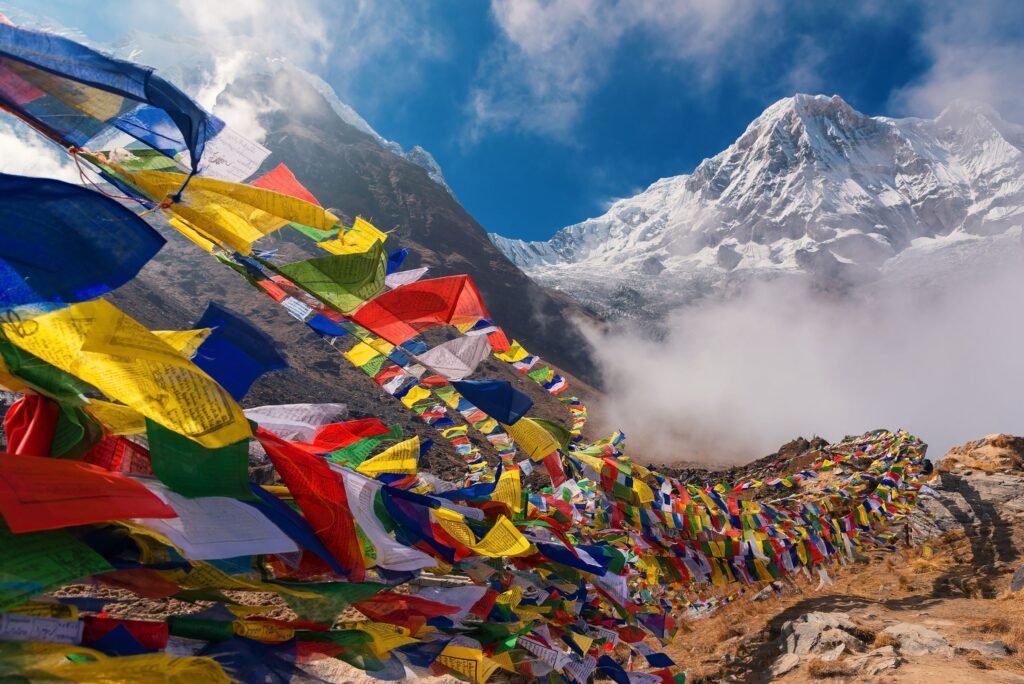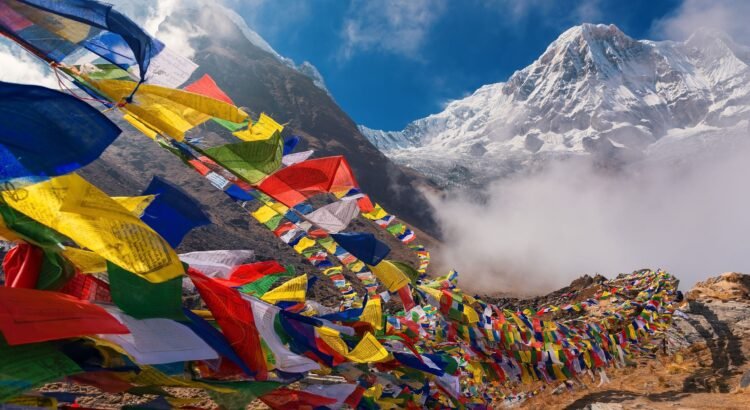
There are few places on Earth where the grandeur of nature meets the depth of spiritual history as harmoniously as in the Himalayas. Towering peaks capped with eternal snow, lush green valleys echoing with prayer chants, and ancient Buddhist monasteries tucked into the cliffs—this sacred region offers a journey that transcends ordinary travel.
From Nepal and Bhutan to Tibet and Northern India, trekking the Himalayas is not only a test of endurance and spirit but also an immersion into a world shaped by centuries of devotion, cultural resilience, and natural wonder. Here, the mountains are not just geographical features; they are revered as gods. And within these peaks lie paths worn by pilgrims, monks, and seekers of peace for millennia.
Join us as we explore the spellbinding experience of trekking through the Himalayas and discovering the timeless beauty of ancient monasteries that stand as sentinels of culture, spirituality, and the Himalayan way of life.
The Majesty Of The Himalayas
Stretching across five countries—India, Nepal, Bhutan, China (Tibet), and Pakistan—the Himalayan mountain range is home to the world’s highest peaks, including Mount Everest (Sagarmatha) and Kangchenjunga. But beyond their staggering altitudes, these mountains are revered for their serene beauty and spiritual energy.
Each valley, ridge, and pass carries local myths and religious significance. Villagers speak of gods living among the peaks, and travelers often sense a deep stillness and reverence in the air. The terrain is diverse—alpine forests, rocky plateaus, high-altitude deserts, and ice-covered summits—providing a challenging yet soul-stirring environment for trekking.
Trekking routes range from short scenic walks to multi-week expeditions, but all share one common thread: they pass through regions steeped in Buddhist traditions and dotted with centuries-old monasteries.
Nepal: Land Of Peaks And Prayers
Nepal is often the first name that comes to mind when thinking of Himalayan treks. Home to eight of the world’s fourteen 8,000-meter peaks, the country offers legendary trails that combine natural majesty with spiritual sanctity.
Everest Base Camp Trek And Tengboche Monastery
The Everest Base Camp (EBC) trek is perhaps the most iconic Himalayan trail. Starting from the vibrant town of Lukla, the journey winds through Namche Bazaar, Dingboche, and ultimately to the foot of the world’s highest mountain. Along the way, trekkers are rewarded with views of Lhotse, Ama Dablam, and of course, Everest itself.
Midway through the trail lies Tengboche Monastery, the largest gompa in the Khumbu region. Perched at 3,867 meters, this sacred site offers panoramic mountain views and a rare window into Tibetan Buddhist life. Monks perform daily rituals in its prayer halls, surrounded by ancient thangkas, spinning prayer wheels, and the distant rumble of avalanches.
Trekking during Mani Rimdu Festival (usually October or November) allows visitors to witness traditional masked dances, spiritual ceremonies, and vibrant communal celebrations at Tengboche—an unforgettable cultural highlight.
Annapurna Circuit And Muktinath Temple
The Annapurna Circuit, another world-famous trek, loops through diverse landscapes—from subtropical forests to high mountain deserts—and offers encounters with both Buddhist monasteries and Hindu temples.
In Muktinath, at 3,800 meters, lies a sacred temple complex revered by both Hindus and Buddhists. Nearby, small gompas with fluttering prayer flags offer solace to pilgrims and trekkers alike. The surrounding Mustang region is a living museum of Tibetan culture, with mud-walled monasteries like Thubchen Gompa in Lo Manthang preserving centuries-old murals and texts.
Bhutan: The Last Shangri-La
Nestled between India and China, Bhutan offers one of the most pristine and spiritually vibrant trekking experiences in the Himalayas. The country measures its success by Gross National Happiness, and its landscape is dotted with monasteries, dzongs (fortresses), and chortens (stupas).
The Jomolhari Trek And Tiger’s Nest Monastery
The Jomolhari Trek is Bhutan’s most popular high-altitude trek, offering breathtaking views of Mount Jomolhari, often regarded by locals as the “Bride of Kanchenjunga.” The trail passes through yak pastures, blue pine forests, and remote highland villages.
On most travelers’ bucket lists is the Taktsang Palphug Monastery, better known as Tiger’s Nest. This stunning structure clings to a cliff 900 meters above the Paro Valley. Legend holds that Guru Padmasambhava, the founder of Tibetan Buddhism, flew to this location on the back of a tigress and meditated in the caves. The ascent to Tiger’s Nest is a pilgrimage in itself, and reaching the top rewards you with a sense of serenity that words can scarcely describe.
Tibet: The Rooftop Of The World
For centuries, Tibet has been the epicenter of Buddhist scholarship and monastic life. The vast Tibetan Plateau, with its stark beauty and towering peaks, houses some of the world’s oldest and most important monasteries.
Mount Kailash Pilgrimage
While many parts of Tibet require special permits, those who manage the journey to Mount Kailash describe it as a life-changing experience. Sacred to Buddhists, Hindus, Jains, and Bon practitioners, Kailash is believed to be the abode of Lord Shiva and a cosmic axis of the universe.
Pilgrims perform the kora, a 52-kilometer circumambulation of the mountain, often in a single day. Along the way, they pass monasteries like Diraphuk and Zutrulphuk, where pilgrims chant mantras and spin prayer wheels while contemplating the meaning of existence in the shadow of divine geography.
Samye And Ganden Monasteries
The Samye Monastery, built in the 8th century, is considered Tibet’s first Buddhist monastery and a model of the Buddhist cosmos. Visitors can wander its mandala-shaped complex and interact with monks engaging in daily chants.
Equally impressive is Ganden Monastery, located near Lhasa. Founded by Tsongkhapa, the founder of the Gelug school of Tibetan Buddhism, it sits high on a mountain ridge, offering panoramic views of the surrounding valleys and a direct connection to Tibetan religious heritage.
India: Ladakh And The Monasteries Of The North
In the far north of India lies Ladakh, a high-altitude desert flanked by the Zanskar and Karakoram ranges. Here, ancient Gompas sit atop rocky cliffs, and prayer flags flutter in the wind like messages to the heavens.
Markha Valley Trek And Hemis Monastery
The Markha Valley Trek is one of Ladakh’s most accessible and beautiful trails. It traverses river crossings, barley fields, and remote villages where time seems to stand still. Along the route, trekkers encounter monastic sites like Techa Gompa, dramatically perched above the valley.
Near the capital, Leh, stands Hemis Monastery, the largest and wealthiest in Ladakh. Founded in the 17th century, Hemis is home to a massive statue of Guru Rinpoche, rare thangka paintings, and the annual Hemis Festival, a vibrant celebration of monastic life with masked dances and spiritual music.
Spiti Valley And Ki Monastery
To the southeast lies Spiti Valley, a stark yet stunning region that feels closer to Tibet than to the rest of India. The Ki Monastery, built over a thousand years ago, is a living center of Buddhist education and practice. Surrounded by snow-capped peaks and barren terrain, it feels as though you’ve stepped into another century.
Monastic Life And Spiritual Encounters
Trekking through the Himalayas brings more than scenic views—it opens doors to meaningful human encounters and spiritual introspection. In many monasteries, visitors can witness or participate in:
- Morning prayer chants as monks gather with rhythmic drums and low chants.
- Butter lamp lighting rituals, symbolizing enlightenment.
- Teachings from lamas or resident monks, offering guidance on Buddhist philosophy.
- Simple vegetarian meals shared with monks and fellow trekkers in communal silence.
Some monasteries even offer monastery stay programs, where visitors can stay overnight, join in meditation sessions, and experience daily life within monastic walls. These are opportunities for deeper reflection and connection—quiet moments amid the grandeur of the Himalayas.
The Spiritual and Physical Challenge
Himalayan trekking is both physically demanding and spiritually rewarding. High altitudes test the body, while the isolated beauty of the mountains tests the mind and heart. Each step—whether across a prayer-flag-laden bridge or a steep mountain pass—feels purposeful.
As you walk among shepherds, monks, and villagers, you become part of an age-old rhythm. The Himalayas teach patience, humility, and awe. They challenge you to let go, to be present, and to appreciate simplicity in profound ways.
Conclusion: A Sacred Journey Through the Roof of the World
To trek the Himalayas and discover ancient monasteries is to journey into a realm where Earth meets sky and body meets spirit. It is not just about reaching a summit or visiting historic sites; it’s about embracing a deeper kind of travel—one that transforms, enlightens, and endures.
In the quiet of a remote mountain trail, in the flicker of a butter lamp beneath a golden Buddha, or in the smile of a child offering tea in a windswept village, you find more than adventure. You find meaning. The Himalayas whisper to those who listen—not with noise, but with timeless stillness.
So, lace up your boots, pack your sense of wonder, and step onto the ancient paths of the Himalayas. The mountains are calling—and within them lies the story of eternity.




